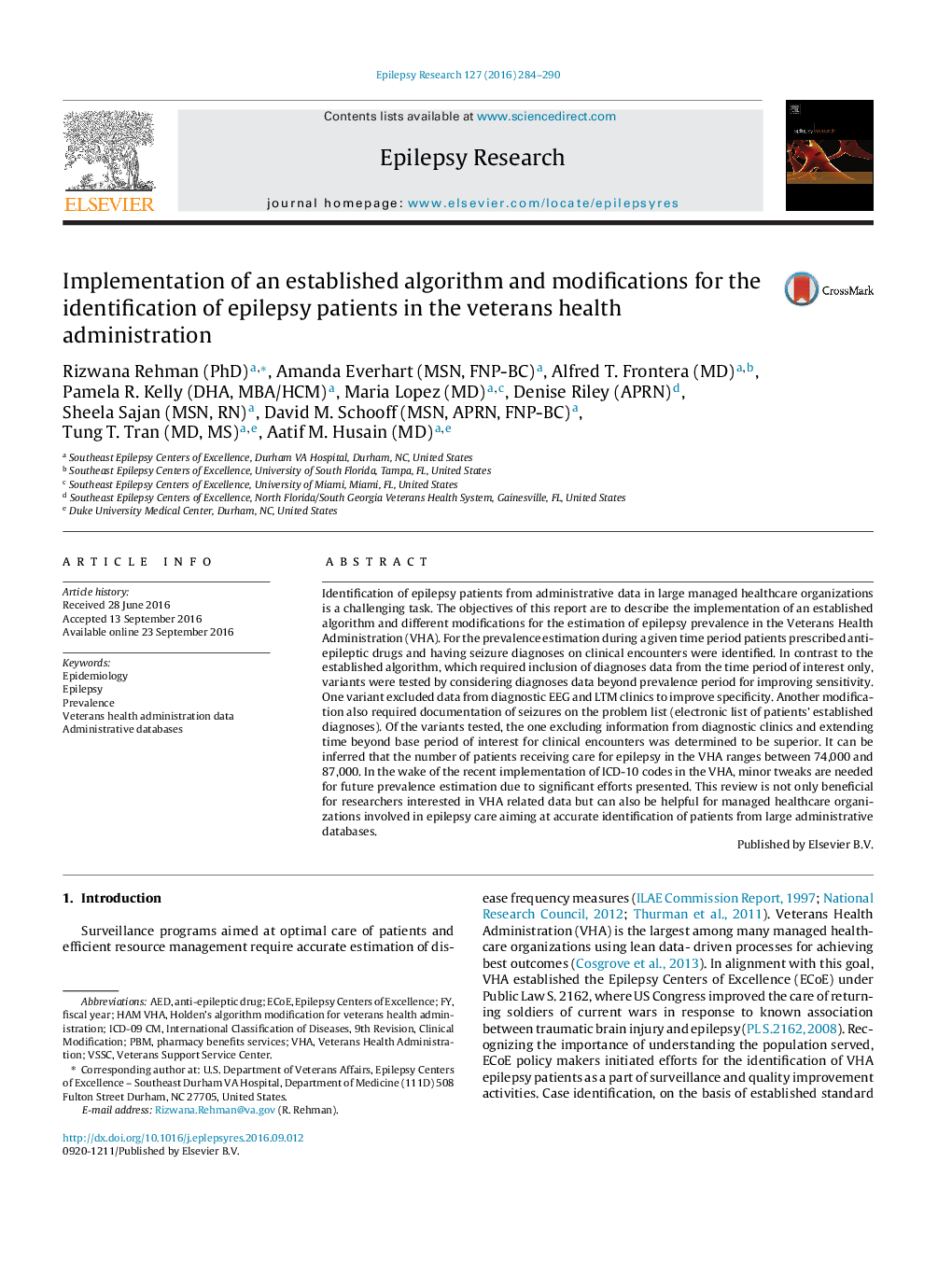| Article ID | Journal | Published Year | Pages | File Type |
|---|---|---|---|---|
| 6015067 | Epilepsy Research | 2016 | 7 Pages |
Abstract
Identification of epilepsy patients from administrative data in large managed healthcare organizations is a challenging task. The objectives of this report are to describe the implementation of an established algorithm and different modifications for the estimation of epilepsy prevalence in the Veterans Health Administration (VHA). For the prevalence estimation during a given time period patients prescribed anti-epileptic drugs and having seizure diagnoses on clinical encounters were identified. In contrast to the established algorithm, which required inclusion of diagnoses data from the time period of interest only, variants were tested by considering diagnoses data beyond prevalence period for improving sensitivity. One variant excluded data from diagnostic EEG and LTM clinics to improve specificity. Another modification also required documentation of seizures on the problem list (electronic list of patients' established diagnoses). Of the variants tested, the one excluding information from diagnostic clinics and extending time beyond base period of interest for clinical encounters was determined to be superior. It can be inferred that the number of patients receiving care for epilepsy in the VHA ranges between 74,000 and 87,000. In the wake of the recent implementation of ICD-10 codes in the VHA, minor tweaks are needed for future prevalence estimation due to significant efforts presented. This review is not only beneficial for researchers interested in VHA related data but can also be helpful for managed healthcare organizations involved in epilepsy care aiming at accurate identification of patients from large administrative databases.
Keywords
Related Topics
Life Sciences
Neuroscience
Neurology
Authors
Rizwana PhD, Amanda MSN, FNP-BC, Alfred T. MD, Pamela R. DHA, MBA/HCM, Maria MD, Denise APRN, Sheela MSN, RN, David M. MSN, APRN, FNP-BC, Tung T. MD, MS, Aatif M. MD,
